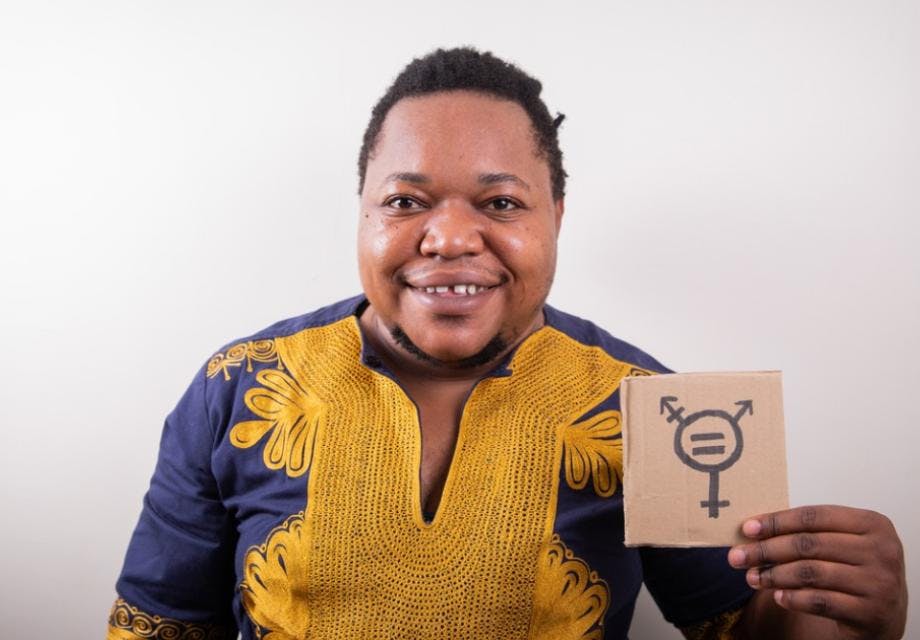What is gender identity?
Hester Phillips
18 August 2023
You might have heard terms like ‘trans’, ‘non-binary’, ‘genderqueer’ and ‘cis’ – but what do they all mean?
We all know what people mean when they say they are a boy or a girl or a woman or a man. But what if someone says they are transgender or non-binary? All these terms relate to something called gender identity, which describes how we feel about being male and female.
This might seem complicated. But each of us has a gender identity, so it’s good to understand what it means and what it doesn’t.
The good news is that we’ve got you covered – read on to for all you need to know.
What is gender identity?
Male and female are genders. How we feel about being male or female is our gender identity.
But to really understand what gender identity means, we have to go back to the beginning. Most of us are born with boy parts or girl parts (although intersex people may have both). This is called our biological sex. If someone is born with a vagina the world will see them as a girl, for example.
Many of us feel that the body we were born with matches our gender identity. For instance, someone is born with a penis, the world sees them as male, and they feel like a male.
But because gender identity is about how we feel, not our physical body, some people may have a different gender identity to their biological sex. Some people might feel they are the opposite gender to their body, and some people might feel like a mix of both genders or a different gender at different times.
That’s why some people say gender is more than the two opposite (or binary) ideas of male and female. Instead, the idea is that gender is more like a sliding scale, and our gender identity places all of us somewhere along that scale depending on how we feel or identify.
What if I’m questioning my gender identity?
If you feel like this it’s okay. None of us choose our gender identity, it’s just how we are.
Remember that you are not alone. Lots of people question their gender identity at some point in their life. And some people have a strong feeling that their gender identity does not match how the world sees them. Exploring how you feel, and learning to love and accept it, can be hard. But it’s one of the best things you can do for yourself.
What does being transgender mean?
People with a gender identity that is opposite to their sex are sometimes called trans men and trans women. It’s important to remember that transgender is used to describe a wide range of experiences and identities. Being transgender will mean different things to different people depending on their own experience.
In general, trans women are born with a penis and other male characteristics but feel female. While trans men are born with a vagina and other female characteristics but feel male. Not everyone who feels like this will call themselves trans, and that’s totally fine.
Some trans people decide to do things to express their gender identity on the outside so that it matches how they feel on the inside. They might change how they look, the kind of clothes they wear or how they style their hair. Some trans people ask to be called by a different name and change their ID documents. Some will also change their body, for example, by taking sex hormones and/or having surgery.
What does being non-binary mean?
People with a gender identity that is neither male nor female, or is both male and female, are sometimes called non-binary, gender neutral, gender-queer or gender diverse.
What does being a cis-man or cis-woman mean?
People with a gender identity that matches their biological sex are sometimes called cis-men and cis-women.
Is being trans the same as being gay?
No. Gender identity is different from sexuality. For example, a boy might find other boys attractive. But that doesn’t mean that boy feels like a girl.
Put simply, your sexuality is about your sexual feelings. It includes:
• who you are attracted to, either romantically or sexually
• who you choose to have sex with
• what type of sex you like having
• what turns you on.
Examples of different sexualities are being straight (or heterosexual), gay or lesbian (homosexual), or bisexual.
Anyone with any kind of gender identity can have any kind of sexuality.
So a trans women who is attracted to men may identify as straight. But if she is attracted to men and women she may identify as bisexual. Or if she is only into women then she might identify as lesbian. Or she might reject all of these labels, and that’s fine too.
All this stuff might be hard to get your head around. But it’s good news, as it means you can be exactly who you want to be. Remember you don’t have to use any of these terms if you don’t want to. How you describe yourself is up to you.
And whatever you might be going through, you’re not alone!
Get our news and blogs by email
Keep up-to-date with all our latest news stories and blogs by signing up to the Be in the KNOW news digest.
